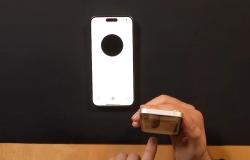This Tuesday, May 21, 2024, OpenAI organized its first event in Paris. The presentation, masterfully led by Olivier Godement, OpenAI’s API director, and Romain Huet, developer experience director, was essentially aimed at attracting the community of developers present in France. Among the guests, we also met many developers and employees of companies likely to exploit AI in the context of their activities.
The conference began with a short video by Sam Altman, CEO and co-founder of OpenAI. In the opening sequence shown on a giant screen, Altman praised the French ecosystem, which he described as dynamic. The entrepreneur, who regrets not having been able to make the trip to Paris, claims to have been impressed by the projects born in France during a previous visit to France.
OpenAI touts ChatGPT 4o to attract developers
OpenAI claims up to three million monthly users for ChatGPT APIs. It is through these application programming interfaces that developers can create services that leverage generative AI. Among the main tools born from the initiative is the new AI-enriched Microsoft Bing, deployed early last year.
During the event, the American company spoke at length about the latest version of ChatGPT, namely ChatGPT 4o. Announced last week, this iteration stands out above all for its multimodal capabilities. To respond as naturally as possible, the AI relies on a new model trained to combine different modes of communication. In front of a captivated audience, OpenAI demonstrated all the use cases of ChatGPT 4o, from real-time translation to the creation of an image based on a freehand drawing. With its impressive demonstrations, the start-up wants to attract developers who already seem won over.
In the process, a new preview of Sora was revealed. In just a few seconds, the video generator created a very realistic sequence showing the streets of Paris during the 1889 World’s Fair. In the same way as Dall-E, Sora works in synergy with ChatGPT. All you have to do is contact the chatbot to create a quality video. Subsequently, Romain Huet used GPT to add a voice-over to the sequence by cloning his voice tone. For the record, Sora will be released during the current year.
Also read: ChatGPT will make life easier for Google Drive and Microsoft OneDrive users
Cheaper AI models
Above all, OpenAI discussed in broad terms the future of its generative artificial intelligence. The American company is committed to working on the creation of cheaper models, which should facilitate the democratization of AI. This is already the path taken by GPT-4o, which aims to be more affordable than later iterations.
Furthermore, OpenAI will make available smaller versions of GPT. These iterations will have fewer parameters, that is, they will have more limited processing capacity. However, they should easily meet most user requests. This approach likely aims to respond to the emergence of open Source AI models, capable of running without difficulty on a computer, or even a smartphone. These models require less computing power than a large language model and threaten the hegemony of the Silicon Valley behemoths. The other tech giants involved in the AI race have taken the same turn. Google has released its Gemini model in several sizes. This is also the case for Meta. Mark Zuckerberg’s company offers a wide range of Llama models in different sizes.
The start-up wants to facilitate customizing AI models. In the months and years to come, developers should be able to more easily customize GPT language models to design tailor-made chatbots. In Olivier Godement’s eyes, all organizations will end up having their own model to meet their specific needs. More modest, certain models will be designed to carry out very specific tasks.
These personalized models will take the form ofmultimodal agents, capable of interacting with the interlocutor by voice, image or text, prophesies the OpenAI framework. These agents should be able to rely on a database provided by the user or the third-party developer. Thanks to this personalized data, AI could offer tailor-made responses to the Internet user. This glimpse of the future of generative AI is reminiscent of that offered by Qualcomm, which described at length the smartphone of the future, during its last Snapdragon Summit.
News from GPT-5… or GPT-Next
Finally, the start-up briefly gave news of GPT-5, the next big update to the language model behind ChatGPT. Until now, the San Francisco firm has remained very evasive on the characteristics of the next model. The Parisian presentation of OpenAI was structured around the projection of a series of slides devoted to the evolution of models.
On these slides, OpenAI discusses the next version of GPT under the name “GPT-Next”. It could bea temporary name. However, this mention suggests that the firm does not intend to settle for a simple GPT-5, which would logically have succeeded GPT-4. OpenAI slides confirm the arrival of a new GPT later this year. The latest leaks speak of a release sometime this summer. The model is already being tested.
Unsurprisingly, OpenAI confirms that it has further ideas. The presentation shows in black and white that other generative AI models will be deployed later, after GPT-Next. Trademark registrations had already lifted the veil on OpenAI’s long-term plans. On the other hand, the company has not yet communicated a launch schedule for these future language models.
-
-







